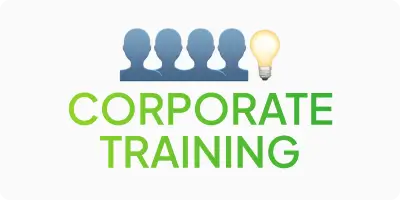
Each person is unique, with his own character and emotional state, which is constantly changing. No one is able to smile or be gloomy all the time, both in life and at work, and therefore cannot give 100% every day. Sometimes you want to relax and do nothing, and sometimes, on the contrary, you are ready to move heaven and earth at any moment. For business owners, this variability creates a challenge: how to motivate staff, taking into account individual differences and fluctuations in mood and productivity in each employee?
Is motivation really that important?
Employee motivation is a key factor determining the success or collapse of a company. There is such a phenomenon as burnout, when a person loses the ability to work qualitatively, take responsibility and loses the desire to contribute to the life of the organization. It’s like a zombie in the real world. Demotivated employees are not only less productive, but can also negatively affect colleagues, creating a toxic environment that undermines teamwork and cooperation.
However, if you properly build a company policy and establish certain processes that affect the morale of the whole team, you can get unexpected results.
What is motivation?
Let’s first understand what motivation is. If we consider from the point of view of psychology, it is a set of motives that determine the activity of the individual and its focus on meeting certain needs. In simple words, motivation is the driving force that drives a person to action, directs his behavior and determines the level of effort he makes to achieve goals. This is a complex process that involves the interaction of human needs, desires, values and aspirations.
There are two main types of motivation:
- Internal motivation, which follows from a person’s own interest, pleasure or passion for a certain activity.
- External motivation driven by external factors such as rewards, recognition, pressure, or fear of punishment.
This knowledge helps managers and HR to choose the right and effective strategy for motivating employees.
Employee motivation is the spark driving the company’s success
Many managers still believe that employee motivation should be based solely on monetary incentives, thinking that this is enough for a modern person. However, this approach is outdated and only partially effective. Today, employees need a comfortable working environment where they are encouraged to develop, help achieve goals and, most importantly, listen to their opinions and take into account suggestions.
When employees feel valued, engaged and inspired, it creates a positive and supportive atmosphere in the workplace, and the company reaps a number of benefits:
- Increased productivity – motivated workers are more focused, responsible and efficient in the robot.
- Better staff loyalty and engagement.
- Greater creativity and innovation.
- Better teamwork and collaboration between departments.
- Increased reputation among candidates.
- Growth in profit and business efficiency in general – all of the above advantages are reflected in the financial results of the company.
Employee motivation strategies
Therefore, motivation is based on the desire and needs of employees, accordingly, strategies for building an incentive should fully cover and close both material and intangible factors.
Intangible motivation
Intangible motivation is an ideal tool to increase employee satisfaction and engagement, because companies do not incur large financial costs.
Flexible schedule and the possibility of remote work are the first things that specialists pay attention to when choosing a job. Giving employees the freedom to independently manage their time and place of work helps them maintain a balance between work and personal life. On the other hand, a comfortable office environment, where all amenities for staff are provided, is also highly appreciated. In both cases, employees prefer companies that show trust and respect, while receiving high productivity and loyalty. In both cases, the employer gets a productive employee with a sense of trust and respect for the company.
Another key aspect of intangible motivation is recognizing and rewarding employee achievements. People have an innate need to feel that their efforts and contributions are valued and noticed. The introduction of a recognition program that regularly celebrates and celebrates the successes of employees can have a powerful motivational effect.
Material motivation
Financial rewards remain an effective method of motivating and recognizing employee loyalty. Money is the main reason why people go to work every morning. And pleasant bonuses, premiums and promotions from the company encourage employees not only to make extra efforts, but also cultivate a sense of ownership and interest in the company’s success
Social packages demonstrate that the company cares about the well-being of its employees and is ready to invest in their long-term health and financial stability. Their composition depends on the financial capabilities and policies of the organization.
In addition, companies can organize team building, events and recreation. This promotes a sense of unity, allows you to get to know each other better in an informal setting and just relax. A friendly atmosphere strengthens team ties and motivates people to support their colleagues.
Development and career growth
To be an advanced specialist in the modern world, a person must develop their skills and constantly learn something new. Moreover, it is better for owners to have competent and ambitious professionals who are focused on the future. Providing opportunities for professional training and certification motivates employees to contribute to the company’s success. When employees feel that their employer values their growth and provides resources to improve their skills, they are more likely to remain engaged, motivated, and loyal to the company.
It is also important to define the career path and opportunities for the employee at the hiring stage so that they are motivated to make more efforts to take on additional responsibilities and demonstrate leadership skills.
By investing in employee development and advancement, organizations can create a culture of continuous learning, engagement, and growth that attracts and retains top talent.
Tips for motivating employees
- Communicate regularly with your employees, learn about their needs, aspirations and challenges. Show that you value them not only as employees but also as individuals.
- Recognize and celebrate your employees’ achievements. Whether it’s public praise, a personalized thank you note or a monetary reward. Show your employees that their efforts are noticed and appreciated.
- Provide your employees with professional development and training opportunities. Encourage them to attend conferences, take online courses, or get certified in their field. Invest in their growth and skill development.
- Give your employees a certain level of autonomy and decision-making power in their work. Trust their abilities and let them take responsibility for their projects and tasks.
- Encourage open and honest communication in your team. Create a safe space where employees can share their ideas, thoughts, and concerns without fear of judgment or punishment.
- Make sure that the working environment is comfortable, inclusive and favorable for cooperation. From ergonomic workplaces to recreation areas and team activities, create a space that promotes employee well-being and engagement.
Remember that each employee is unique, and what motivates one may not work for the other. Be flexible and adapt your approach to the individual needs and preferences of your employees.
















